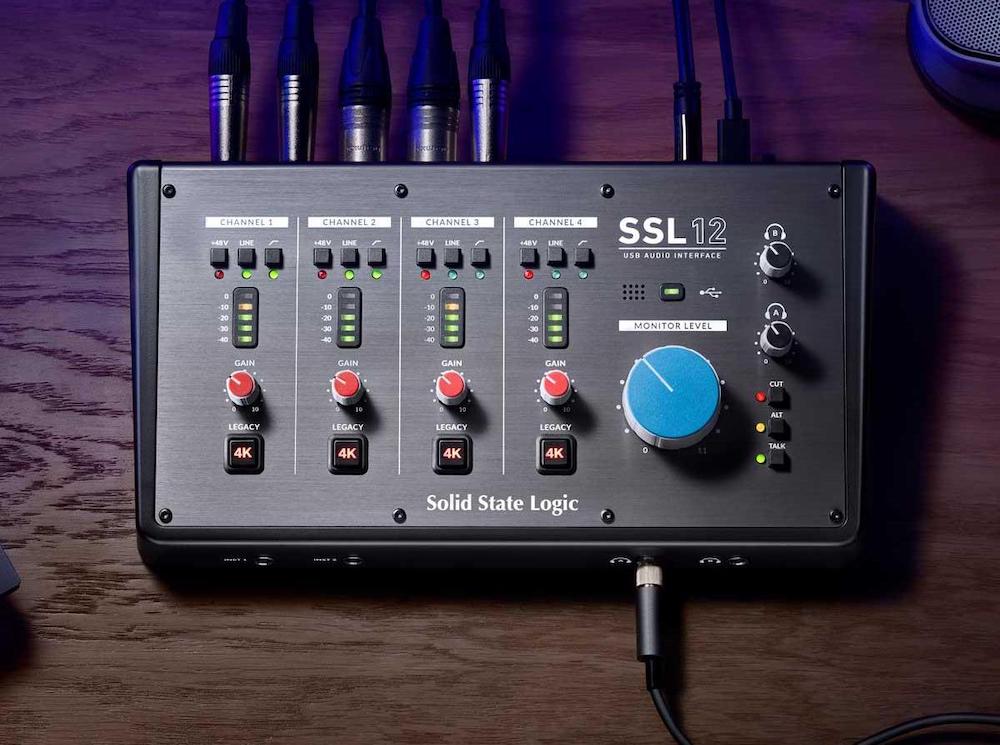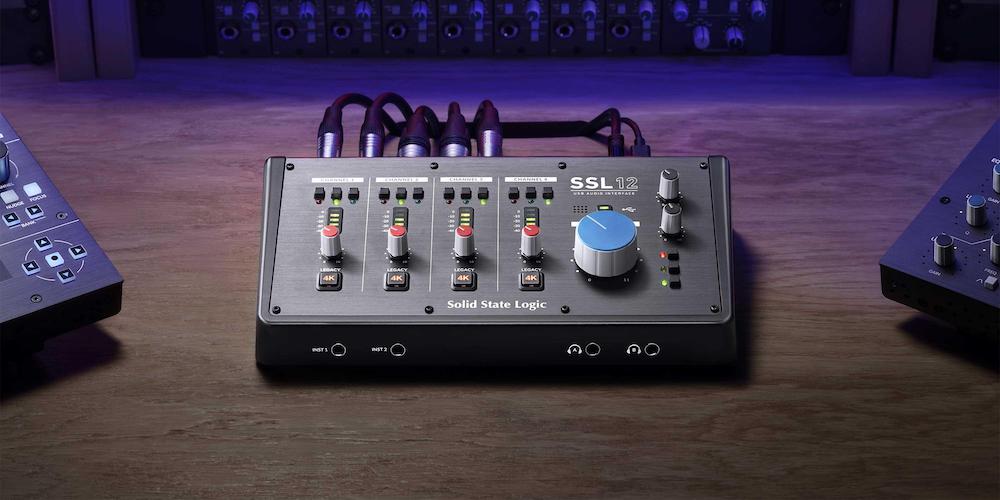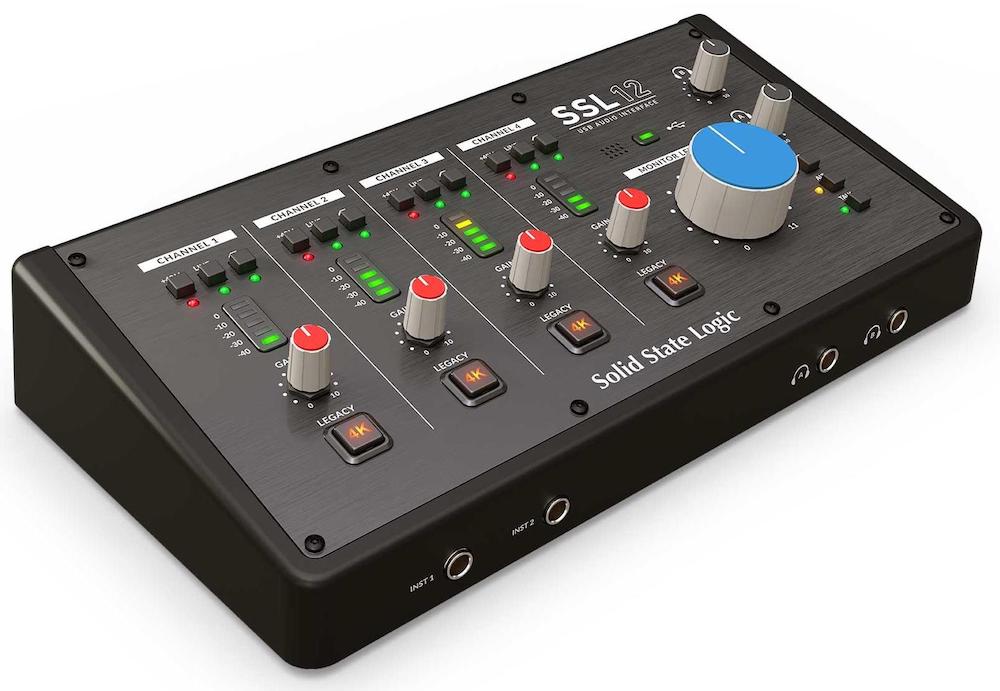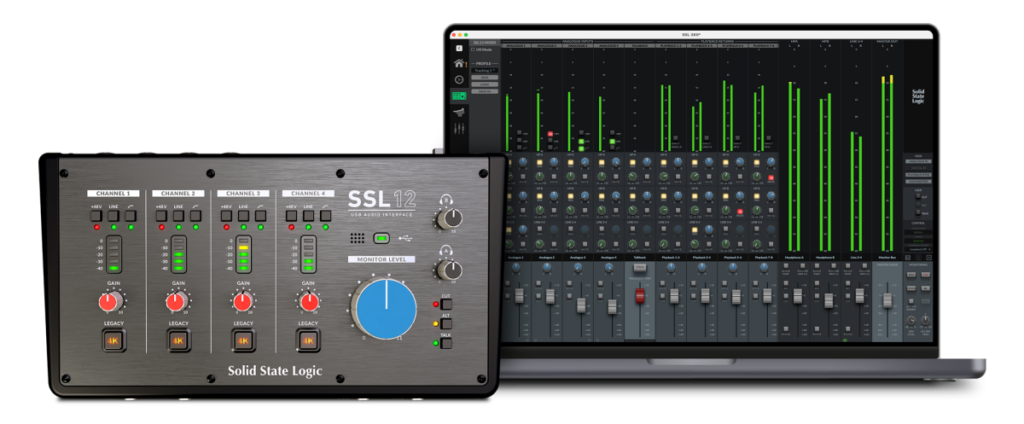The latest SSL interface offers more channels, more flexibility and a step up in sound quality. Greg Scarth puts it to the test.

When SSL launched the 2 and 2+ audio interfaces back in 2020, it marked an entirely new standard for affordable SSL hardware. The brand has been a fixture of pro studios for decades, contributing legendary offerings like the 4000-series recording consoles which helped define the sound of 80s rock and pop, but SSL products don’t come cheap. Prices for the British brand’s mixers start around the low four figures for the most affordable entry-level models, soon hit mid five figures for full-size models like the Origin and rapidly escalate into six figures for the high-end options. Dipping their toes into the congested waters of consumer-level hardware was a risk, but the success of the 2 and 2+ has inspired the release of the new SSL 12, a 12-in/8-out USB interface which promises to bring even more channels of classic SSL sound to an affordable level.
The default cliche that lazy reviewers reach for when describing versatile audio interfaces is that they’re like Swiss army knives. Well, yeah, the 12 definitely fits that description. The first two channels alone show the attention to detail here: both mic, line or high-impedance instrument-level inputs for guitars, with combo jacks on the rear panel for the former and separate ¼-inch jacks on the front for the latter. Manufacturers can be inconsistent with the way they count inputs and outputs, but 12-in/8-out in the case of the 12 refers to four analogue inputs and four line outputs, plus eight digital inputs over ADAT and two stereo headphone outputs. Outputs 3 and 4 can be used as an alternative monitor output, while it’s worth noting that both of the headphone outputs can also be used as a pair of balanced line outputs. It’s largely down to personal preference whether that will work for your recording process, but with MIDI in/out over DIN sockets and USB-C bus power (USB 3.0 required), the 12 feels like a good all-rounder for most home studio setups.

Despite its relatively humble position in the SSL range, the 12 is exceptionally well built and feels like a piece of pro kit. The solid construction feels sturdy on the desktop and there’s a nice weight and responsive feel to the controls, including the large monitor level control which has a light, precise travel. We expected good sound quality from the 12 based on our experience with the 2 and 2+. Sound is certainly on a par with the smaller models, with excellent clarity from the high-gain pre-amps and a pure, uncoloured sound on the whole. One notable difference from the 24-bit 2 and 2+ is that the 12 boasts 32-bit converters. Although the audible benefits of the higher bit depth are debatable, the 12 beats the 2+ on paper in a few areas, suggesting there are a few other small tweaks to the analogue circuits.

One of the main selling points of these small SSL interfaces is the option to engage Legacy 4K mode, independently switchable per channel (as is 48V phantom power, for the record). Inspired by those classic 4000-series consoles, Legacy 4K introduces two “essential characteristics” of the 4000-series sound to your signal, with a high-frequency boost and subtle harmonic distortion helping to add colour and life to dull signals. It’s not essential for every sound, but it’s a great option to have at your disposal, and what’s particularly interesting is the way that it can be used to add a cohesive colour to a few dull signals, helping at the tracking stage to ensure that things will work together nicely in the mix.

Where the 12 really shines is in its workflow, with a great hands-on feel and instant access to most features. It’s worth noting that SSL’s 360 control software is a critical component when it comes to accessing the 12’s deeper features, whether that’s in terms of setting up monitor mixes while tracking, accessing dim, mono and polarity inversion for the monitor control, or choosing pre-/post-fader routing for headphone mixes. It would be a huge stretch to suggest that the 12 offers the same slick workflow of even SSL’s entry-level SiX, but despite its much more humble approach it’s a joy to use, both sonically and in terms of physical feel and the polished professionalism of the 360 software as a virtual mixer.

The 12 comes in at just under £400, which plants it in the higher end of the range for an interface with four analogue inputs, but what you’re paying for here is quality rather than quantity. Audient’s EVO 16 offers more inputs and outputs at the expense of a slightly less intuitive workflow. For a slightly higher price you could also go for Arturia’s AudioFuse Rev 2, which doesn’t quite match the 12 for flexibility but fits similar features into a more compact unit. It’s worth noting that the SSL offers the highest resolution of the three, at 32-bit and up to 192 kHz. The Arturia offers up to 192 kHz, while the EVO only goes up to 96 kHz. How much that matters depends on your application (and your opinion on the value of 32-bit converters). Regardless of which path you choose, we’re in the domain of premium interfaces here. The SSL stakes a strong claim to being one of the best options in this competitive sector.
Greg Scarth
More info/buy